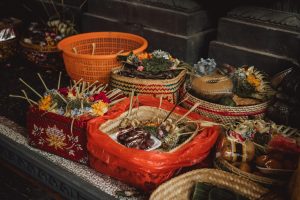Indigenous Weaving Techniques Saving Ancient Crafts
The art of weaving has been an integral part of Indigenous cultures for centuries. Passed down from generation to generation, the ancient practice of weaving has not only been a means of creating beautiful and functional items, but also a way of preserving and celebrating cultural identity. However, with the rise of mass-produced and machine-made products, the traditional art of weaving is at risk of becoming a lost art. Fortunately, Indigenous communities are taking action to revive and preserve their weaving techniques, not only in the name of cultural preservation, but also as a way to protect ancient crafts from extinction. In this article, we will explore the importance of Indigenous weaving techniques in saving ancient crafts and how it is not just about the art, but also about preserving the heritage of a community.
The History of Indigenous Weaving Techniques
Weaving has been a significant part of Indigenous cultures all around the world. It is an art form that is so deeply ingrained in the history and traditions of these communities, that it is considered to be more than just a craft. It is a way of life. The techniques used in Indigenous weaving are rooted in thousands of years of tradition, and each community has their own unique approach to the craft. For example, the Navajo tribe of North America is renowned for their intricate and detailed tapestries and rugs, while the Maori of New Zealand are known for their elaborate and complex weaving patterns.
Indigenous weaving techniques have played a vital role in shaping the cultures and identities of these communities. Many of these techniques have been passed down through oral traditions, with each generation adding their own flair and personal touch to the craft. As a result, the art of weaving has not only been a way to create functional items such as clothing, baskets, and blankets, but also a way to express cultural beliefs and values.
The Threat of Extinction
Despite the rich history and cultural significance of Indigenous weaving techniques, these traditional crafts are facing a serious threat of extinction. With the emergence of mass-produced and affordable products, the demand for hand-woven items has decreased significantly. This has led to a decline in the number of artisans practicing these techniques, as well as a decrease in the knowledge and skills being passed down to younger generations. As a result, many ancient weaving techniques are at risk of being lost forever.
Furthermore, the loss of traditional weaving techniques not only affects the artisan community, but also has an impact on the environment. Many traditional materials used in weaving, such as plant fibers and natural dyes, are sustainable and eco-friendly. However, with the rise of synthetic materials, these sustainable practices are being replaced, leading to further damage to the environment.
The Revival of Traditional Techniques
In the face of these challenges, many Indigenous communities are taking action to revive and preserve their traditional weaving techniques. One of the ways they are doing this is by creating market opportunities for their hand-crafted items. By selling their products directly to consumers, artisans are able to receive fair compensation for their work and support their communities. This not only helps to keep the ancient crafts alive, but also provides financial stability for the artisans and their families.
In addition, many organizations and initiatives have been created to support and promote traditional weaving techniques. These include artisan training programs, cultural festivals, and educational workshops. These efforts not only help to preserve the crafts, but also raise awareness about the importance and cultural significance of Indigenous weaving techniques.
The Impact of Reviving Ancient Crafts
The revival of traditional weaving techniques has a positive impact on not just the artisan communities, but also on the wider society. By preserving these ancient crafts, we are also preserving a piece of history and culture. Furthermore, supporting these techniques means supporting sustainable and eco-friendly practices, which is crucial in the face of environmental challenges.
Moreover, the revival of traditional weaving techniques brings recognition and appreciation for the art and the communities behind it. It allows for a cultural exchange, where we can learn and appreciate the stories and traditions of Indigenous communities, while also supporting their efforts to preserve their heritage.
In Conclusion
Indigenous weaving techniques are not just about producing beautiful and functional items. They are a way of life and a celebration of culture and identity. The preservation and revival of these ancient crafts are crucial in protecting the cultural heritage of Indigenous communities and supporting sustainable practices. As consumers, we have the power to make a difference by supporting and appreciating these traditional techniques, and in doing so, we are contributing towards the preservation of a vital part of our global history.











